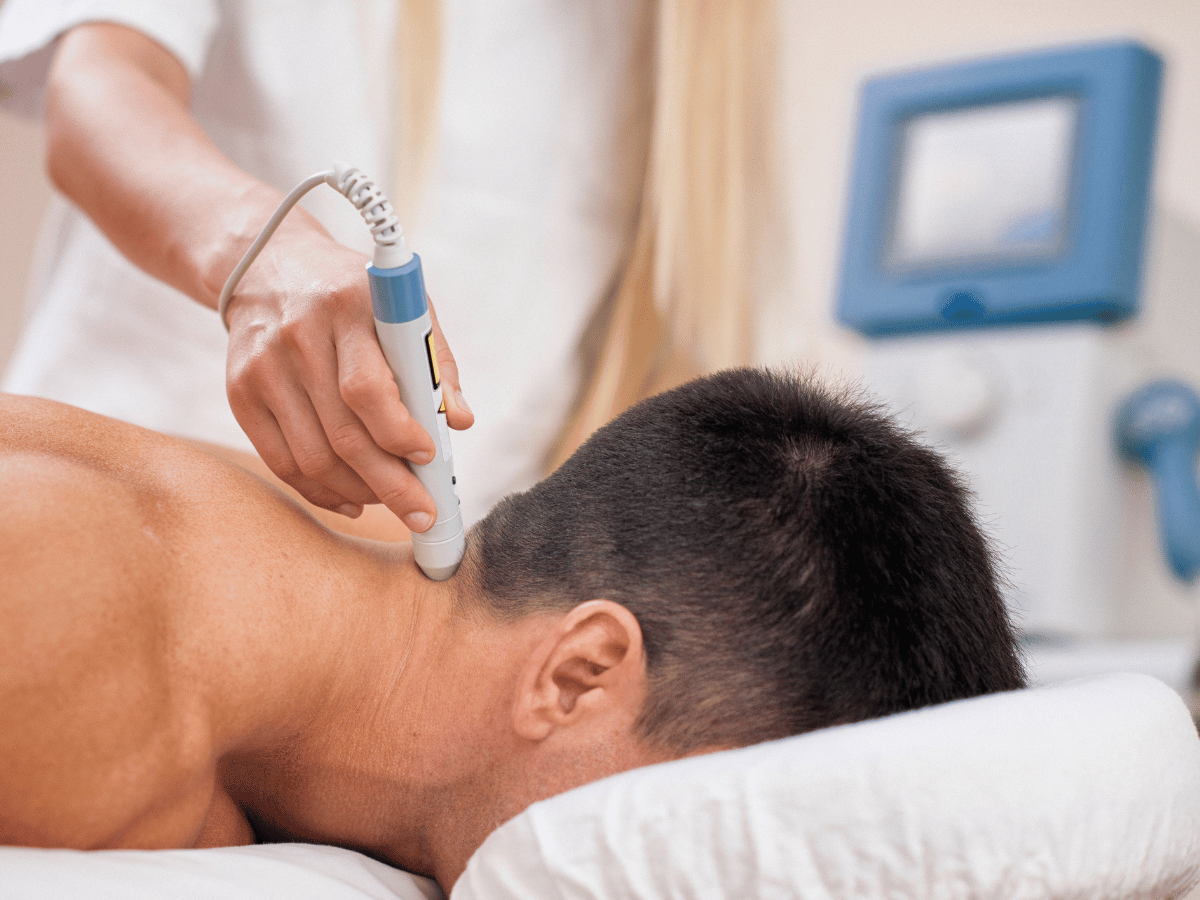
In recent years, we’ve seen a surge in demand for non-invasive healing technologies, especially among patients seeking alternatives to surgery, prescription medication, or long recovery times.
Remy laser therapy is part of this movement. While this specific brand doesn’t have widely published clinical studies yet, its methodology is rooted in well-established principles of photo biomodulation.
So, what can patients actually expect?
Let’s dig deep into how laser therapy works and where Remy fits into that conversation.
Remy Laser Therapy refers to a brand of therapeutic lasers used for a variety of clinical applications, including pain relief, inflammation control, and soft tissue recovery. Though specifics about the Remy system remain limited in published literature, it’s believed to operate as a high-powered Class IV medical laser similar to other systems used in orthopedic rehabilitation, sports medicine, and chiropractic care.
It likely integrates laser wavelengths specifically selected to penetrate tissue layers, reduce pain signaling, and accelerate cellular healing processes. These concepts align closely with what we refer to in the field as low-level laser therapy (LLLT), cold laser therapy, or photo biomodulation (PBM).
Here’s a quick explanation of the basic science: laser therapy works by delivering light energy into the body’s tissues. The photonic (light) energy is absorbed by mitochondria in cells, which boosts ATP production. ATP is the energy currency of the body, and when more of it is available, healing speeds up.
Laser wavelengths typically used in therapy range between 600 nm and 1000 nm, which allows the energy to reach both superficial and deep tissue layers. Higher-powered lasers like what Remy likely offers can achieve deeper penetration (through skin, muscle, and fascia), making them effective for treating musculoskeletal conditions.
The applications of laser therapy are vast and vary depending on the condition being treated, the laser’s wavelength, and power output. Here’s what Remy laser therapy claims to tackle, based on broader laser therapy use cases:
Many of our patients appreciate that laser therapy doesn’t require downtime, needles, or medications. It often complements physical rehab or replaces medications when adverse side effects are a concern.
The actual science supporting laser therapy is known as photo biomodulation. This process involves the stimulation of mitochondrial chromophores to produce cellular energy (ATP) and regulatory molecules like nitric oxide. The release of these molecules leads to:
Dozens of studies, including those indexed on PubMed and supported by the World Association for Laser Therapy (WALT), show a positive clinical impact in reducing pain and inflammation in conditions like osteoarthritis and post-surgical wounds.
Most sessions last between 10 and 30 minutes, and the number of treatments varies depending on the condition:
The patient either sits or lies down and receives precisely dosed laser energy via a handheld device. Some systems auto-modulate pulse frequency and intensity. Treatments are non-invasive, with no anesthesia or bandages required.
Laser therapy is generally considered safe when administered by licensed health professionals trained in laser physics and application protocols. However, systems like Remy must be operated using proper eye protection and tissue-specific dosage parameters to prevent burns or cellular overstimulation.
Contraindications typically include:
Patients often report modest improvement after the first or second session, with increasing relief over subsequent visits. Conditions like chronic lower back pain or plantar fasciitis often show lasting improvement after 6–10 sessions, depending on severity.
Recovery usually isn’t needed. There is no post-treatment scarring, swelling, or downtime. When used in post-surgical scenarios, laser therapy may even shorten traditional healing windows.
Remy Laser Therapy is part of a rising category of safe, targeted, and effective non-invasive treatments. While scientific scrutiny specific to the Remy brand is still developing, the core methodology is sound and supported by extensive clinical evidence. As with any modality, matching the right technology with the right patient at the right time is where real results lie.
Let’s continue exploring these breakthrough therapies not as silver bullets, but as part of a well-integrated care model rooted in science and validated through experience.
Conditions include arthritis, muscle strains, tendinitis, neuropathic pain, chronic back or neck pain, and soft tissue injuries.
No. Most patients feel a soothing warmth during treatment, with no discomfort or soreness afterward.
Acute cases may resolve in 3–6 sessions. Chronic or degenerative issues often require 8–12 treatments.
Side effects are minimal. Rarely, there may be slight skin redness or warmth at the treatment site.
Relief can last weeks to months. Maintenance treatments may be required for chronic issues.
Coverage varies. Some insurers may cover sessions when billed as part of physical or chiropractic therapy.
There is none. Most patients return to regular activity immediately after a session.
It's non-invasive, accelerated healing time, and fewer side effects compared to pain medications and surgeries.
Yes. Contraindications include cancer sites, pregnancy (abdomen area), and photosensitive disorders.
You’ll sit or lie comfortably while the therapist applies laser energy over the affected area with a handheld wand. Most sessions last 15–30 minutes.
Your well-being is our top priority. Reach out today to discover how our dedicated team can support your health journey.
Have questions or want to learn more? Use the form below to get started!
Connect with South Florida’s trusted multispecialty care team and take control of your health with compassion and convenience.
©2025 South Florida Multispecialty Medical Group. All Rights Reserved.